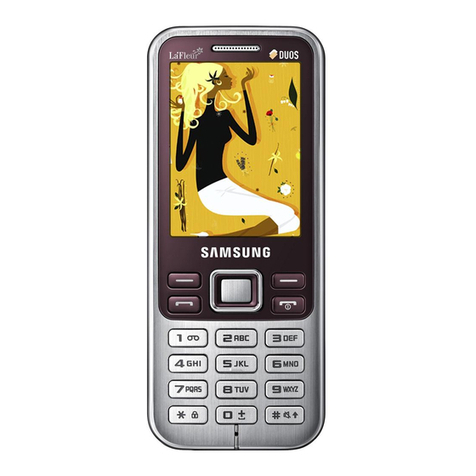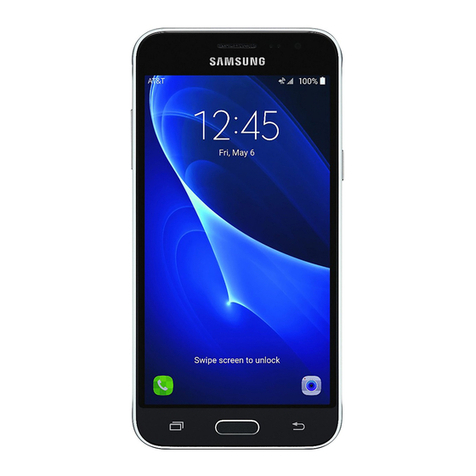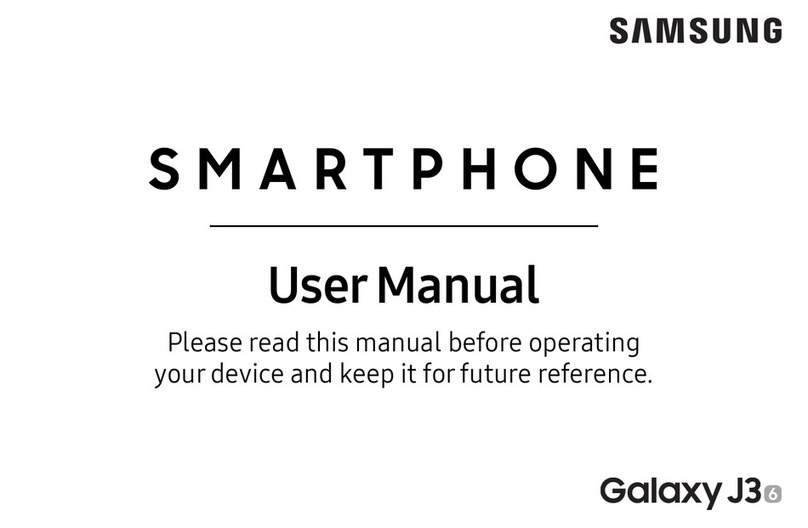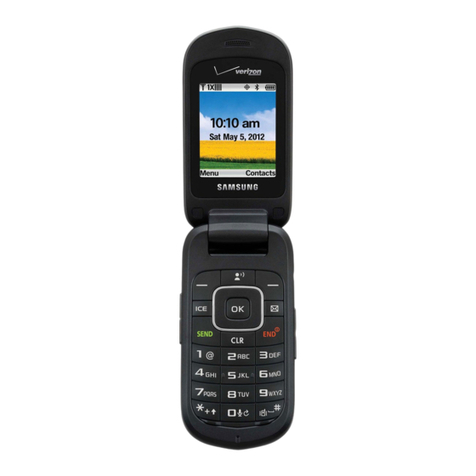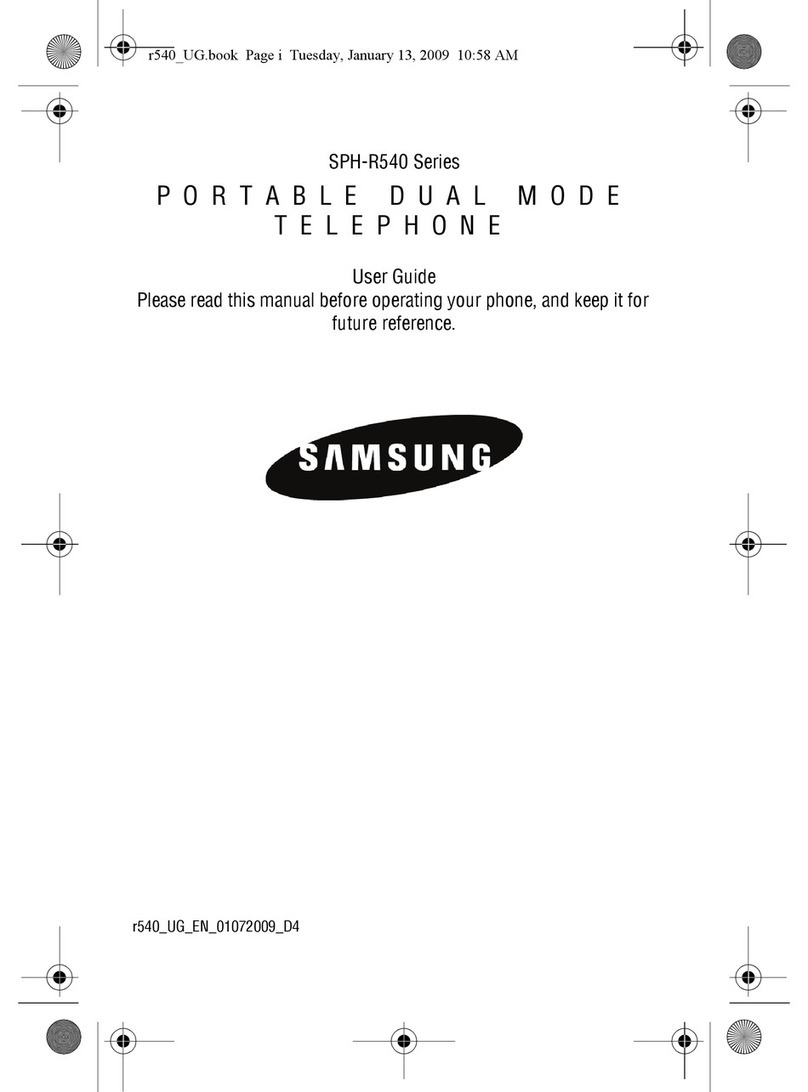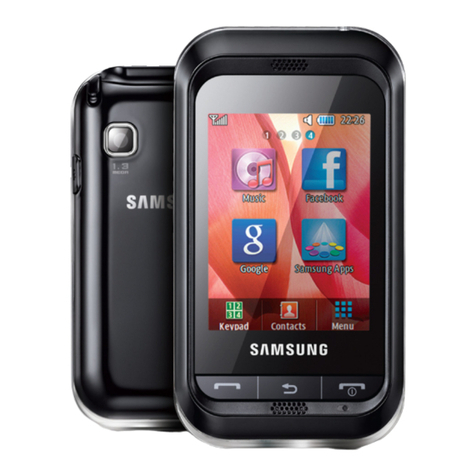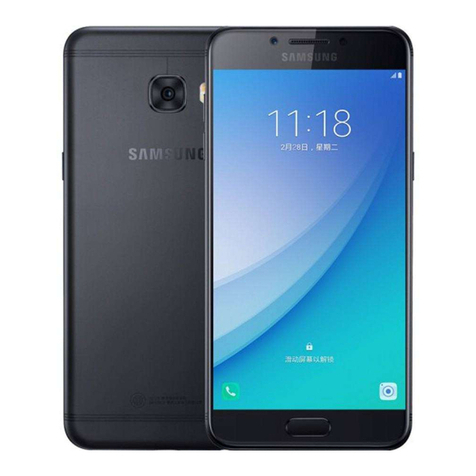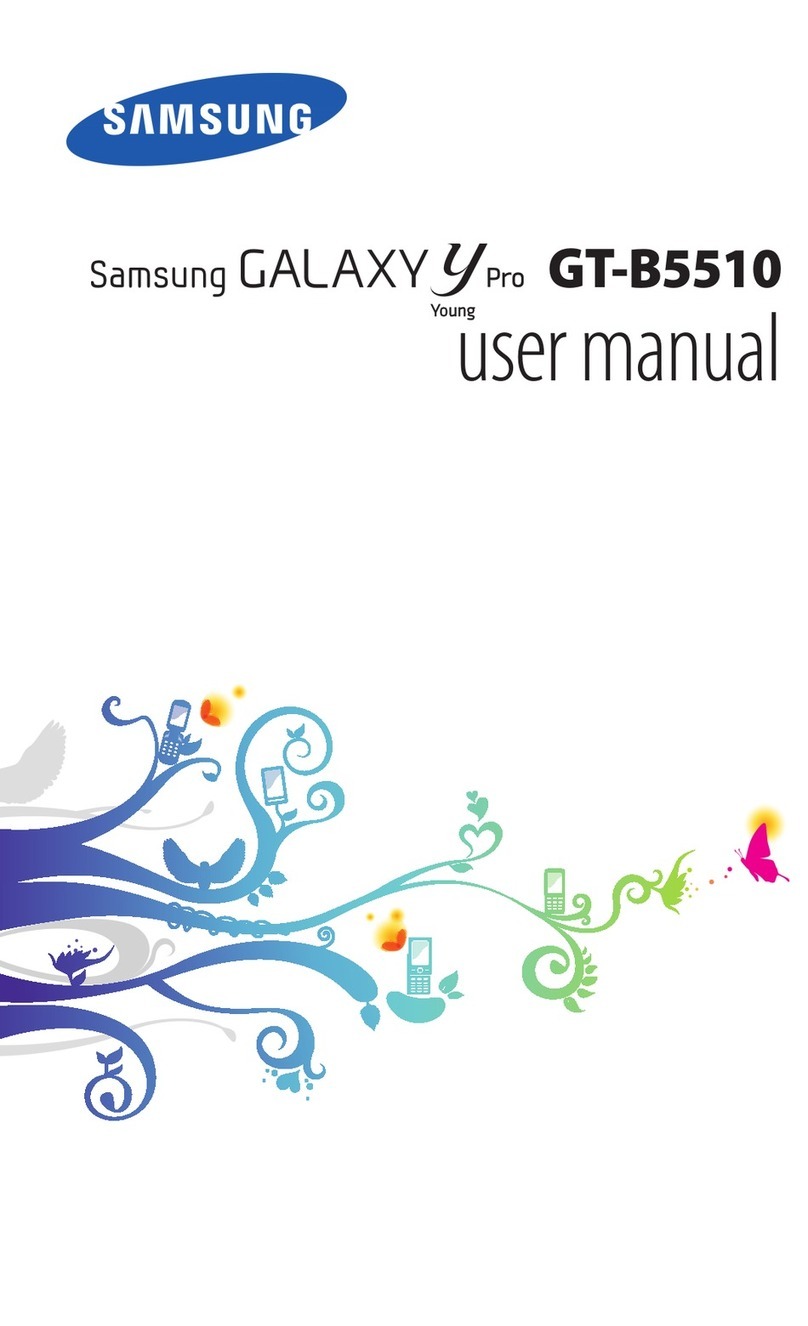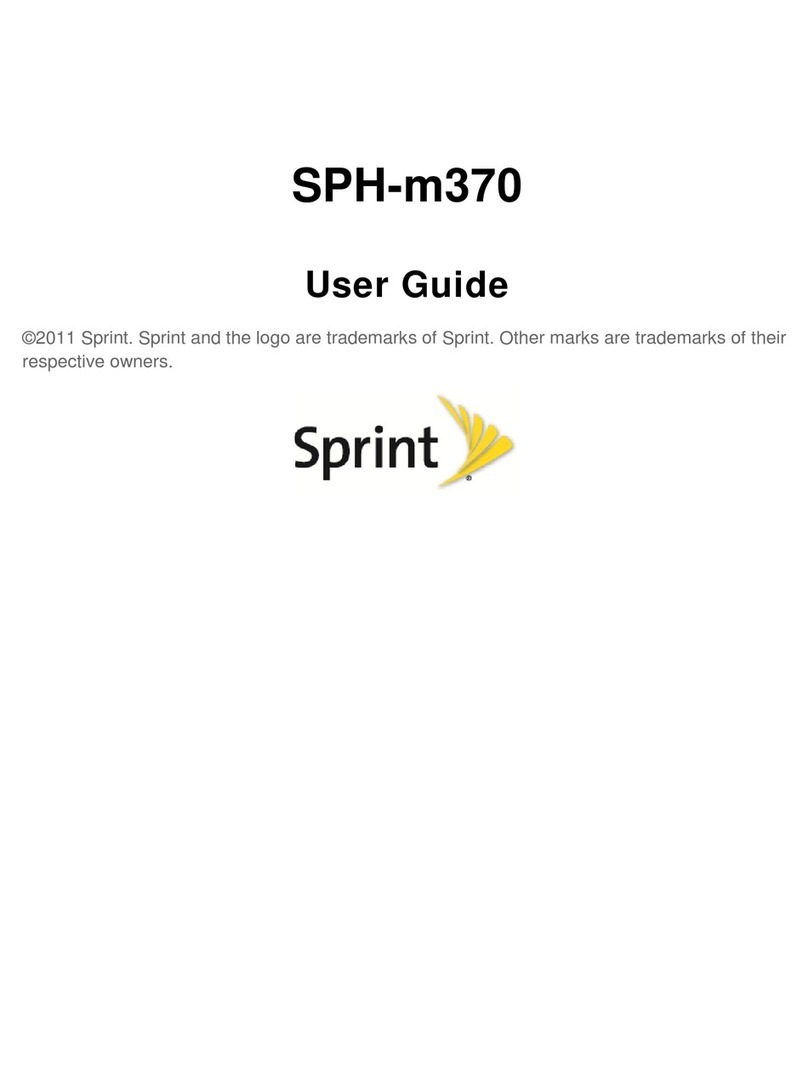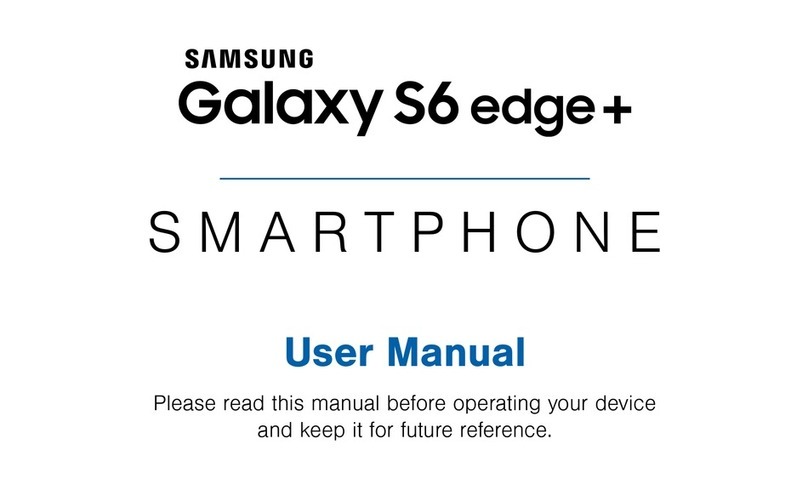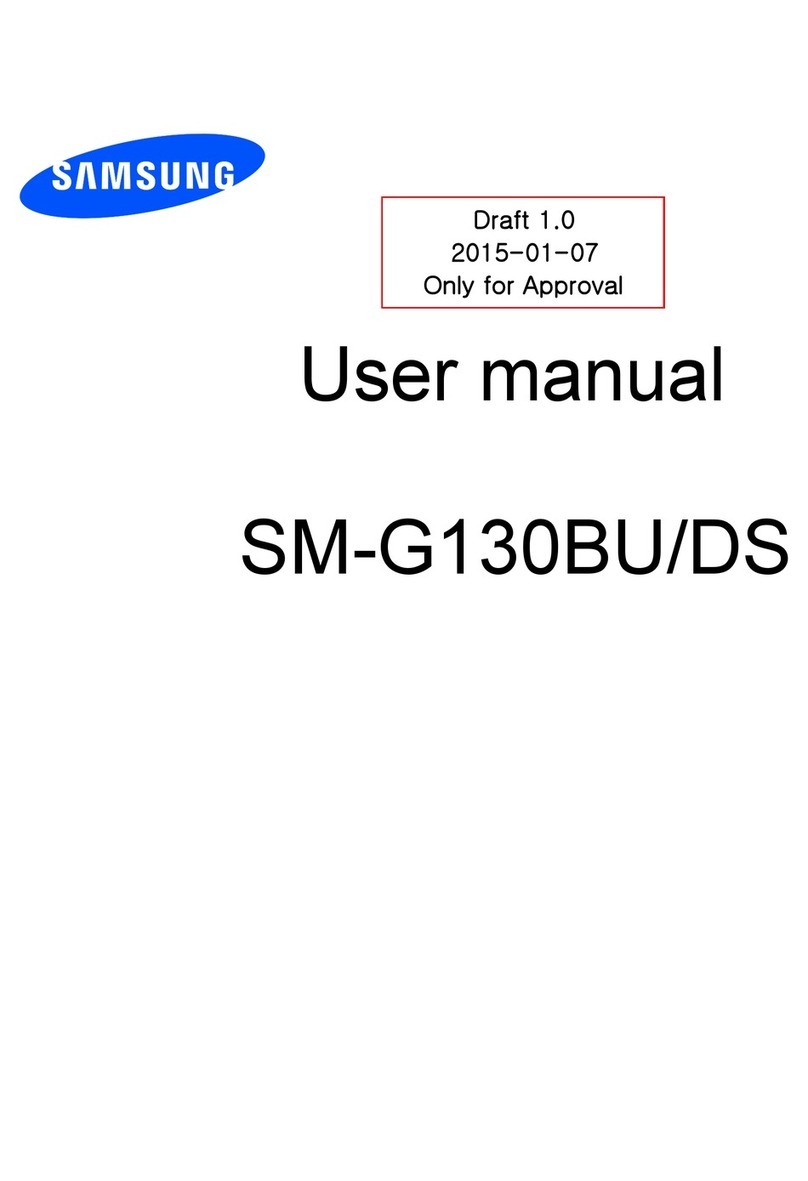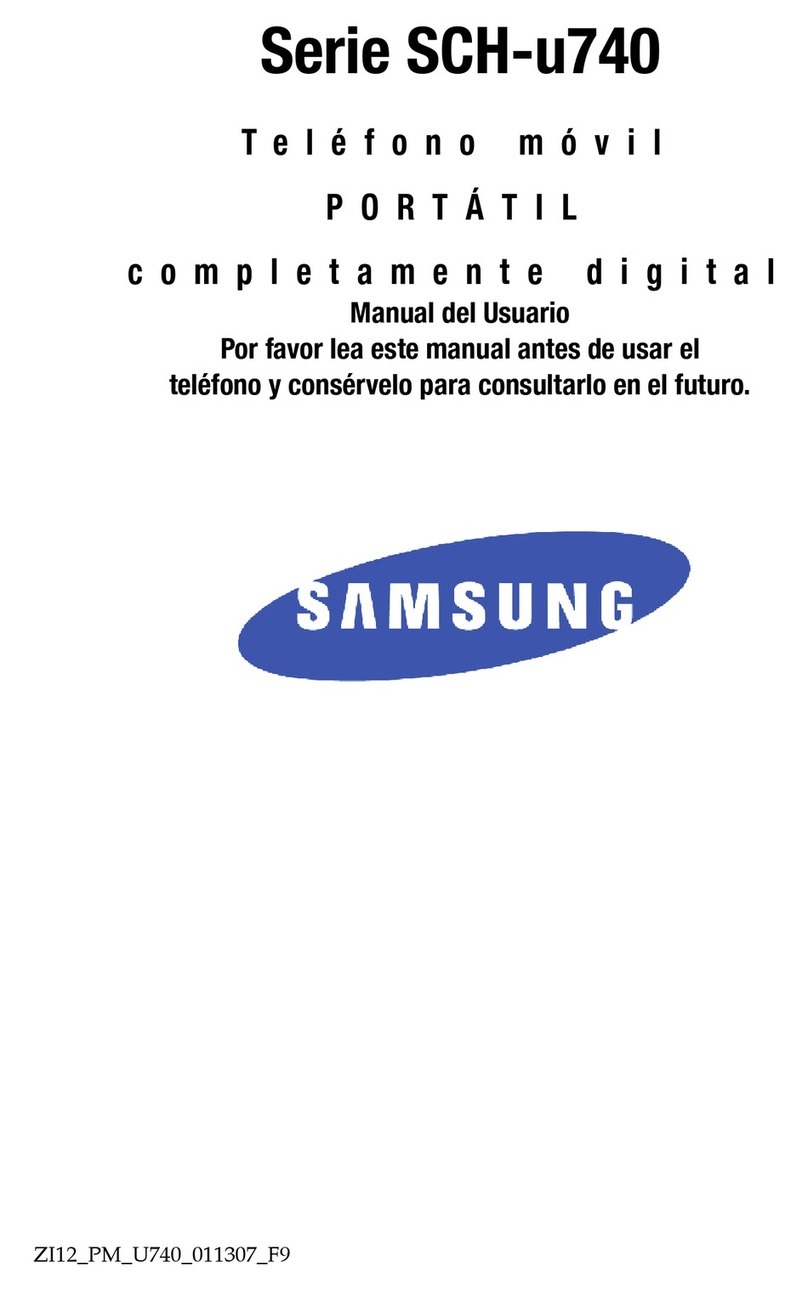
Entering text
Changing the text input mode
In a text input field, press the right soft key until the input mode indicator
you want appears:
•:T9mode
•:ABCmode
• : Number mode
• None: Symbol mode
T9 mode
1. Press
2
to
9
to start entering a word. Press each key once for one
letter.
Example: To enter “Hello” in T9 mode, press
4
,
3
,
5
,
5
, and
6
.
T9 predicts the word that you are typing, and it may change with each
key that you press.
2. Enter the whole word before editing or deleting characters.
3. When the word displays correctly, go to step 4. Otherwise, press
0
to
display alternative word choices for the keys that you have pressed.
For example, “Of” and “Me” use
6
and
3
.
4. Press to insert a space and enter the next word.
ABC mode
Press the keys labelled with the character you want:
- once for the first character
- twice for the second character
- and so on.
For example, press
2
three times to enter “C” and
5
two times to enter
“K.”
Number mode
Press the keys corresponding to the digits you want.
Symbol mode
Press the number keys corresponding to the symbol you want and press
the
OK
soft key. You can press
Up
or
Down
to display more symbols.
Tips for entering text
• To move the cursor, press the Navigation keys.
• To delete characters one by one, press
C
. To clear the display, press and
hold
C
.
• To insert a space between characters, press .
• To change case in T9 mode or ABC mode, press .
• To enter punctuation marks in T9 mode or ABC mode, press
1
.
Sending an SMS message
1. In Idle mode, press the
Menu
soft key.
2. Select
Messages
→
Write new
.
3. Enter the message text.
4. Press the
Options
soft key and add items using the following options:
•
Add objects
: add sounds, images, or animated images.
•
Add templates
: add text templates.
•
Add phonebook
: add Phonebook contacts.
•
Add bookmark
: add bookmark items.
5. Press the
Options
soft key and select
Send only
or
Save and send
.
6. If you select
Save and send
, select a memory location.
7. Enter a destination number and press the
OK
soft key.
Quick feature reference
This section provides brief explanations of features on your phone.
Menu Description
Menu > SIM AT Use a variety of additional services offered by
your service provider.
Menu > Call records
> Missed calls,
Received calls,
Dialled calls
View the most recent calls you have dialled,
received, or missed.
Menu > Call records
> Delete all
Delete the call logs in each call type, or all logs
at once.
Menu > Call records
> Call time
View the duration of recent calls you have
dialled and received. Also reset the time
counter.
Menu > Call records
> Call cost
View the cost of your calls.
Menu > Phonebook >
Search
Search for contacts in Phonebook.
Menu > Phonebook >
New entry
Add a new contact to Phonebook.
Menu > Phonebook>
Group search
Search for Phonebook contacts in caller groups.
Menu > Phonebook >
Edit group
Select a ringtone and image for incoming calls
and messages from members of a group. Also
change the group name.
Menu > Phonebook >
Speed dial
Assign speed dial numbers for your most
frequently dialled numbers.
Menu > Phonebook >
Delete all
Delete all Phonebook contacts stored in the
phone’s memory, on the SIM card, or both.
Menu > Phonebook >
Memory status
View the total number of Phonebook contacts in
the phone’s memory or on the SIM card.
Menu > Phonebook >
SDN
Access the list of service numbers assigned by
your service provider.
Menu > WAP browser
> i-shop
Launch the web browser.
Menu > WAP browser
> Favorite
Save URL addresses in order to quickly access
web pages.
Menu > WAP browser
> Enter URL
Enter a URL address manually and access the
associated web page.
Menu > WAP browser
> Settings
Change the browser settings.
Menu > WAP browser
> Clear cache
Clear information stored in the cache.
Menu > WAP browser
> Push messages
Change the settings for the service, and access
or delete push messages.
Menu Description
Menu > Messages
> Inbox or Outbox
Read received or sent messages.
Menu > Messages
> Write new
Create and send messages to other mobile
phones.
Menu > Messages
> Templates
Preset templates of frequently used messages.
Menu > Messages
> Settings
Set options for using messaging services.
Menu > Messages
> Delete all
Delete messages in each message box, or all
messages at once.
Menu > Messages
> Memory status
Check memory information for messages.
Menu > Messages
> Voice mail
Access your voice mail server and listen to
messages on the network.
Menu > Messages
> Broadcast
Change settings for the service and access
broadcast messages.
Menu > Funbox
> Sounds or Images
Access sounds or images in your phone’s
memory.
Menu > Funbox
> Delete all
Delete sounds or images in each media box, or
all media files at once.
Menu > Funbox
> Memory status
Check the amount of memory in use for sounds
and images.
Menu Description
Menu > Organizer
> Alarm
Set an alarm to sound at a specific time.
Menu > Organizer
> Calendar
Keep track of daily or monthly schedules.
Menu > Organizer
> Time & Date
Set the current time and date manually or set
your local time zone.
Menu > Organizer
> Calculator
Perform basic arithmetic functions.
Menu > Organizer
> To do list
Create a list of tasks and assign a deadline to
each task.
Menu > FM Radio Listen to music or news via the FM radio on
your phone.
Menu > Phone settings
> Display settings >
Wallpaper
Select a background image to be displayed in
Idle mode.
Menu > Phone settings
> Display settings >
Brightness
Adjust the brightness of the display for varying
lighting conditions.
Menu > Phone settings
> Display settings >
Contrast
Adjust the contrast of the display for varying
lighting conditions.
Menu Description
Menu > Phone settings
> Display settings >
Backlight
Set the length of time the display backlight
stays on.
Menu > Phone settings
> Sound settings >
Ring tone
Select a ringtone for incoming calls.
Menu > Phone settings
> Sound settings >
Ring volume
Adjust a volume level.
Menu > Phone settings
> Sound settings >
Alert type
Select an alert type for the call ringer.
Menu > Phone settings
> Sound settings >
Keypad tone
Select a tone which the phone sounds when
you press a key.
Menu > Phone settings
> Sound settings >
Keypad volume
Adjust the key volume.
Menu > Phone settings
> Sound settings >
Message tone
Select the alert ringtone for incoming SMS and
broadcast messages.
Menu > Phone settings
> Sound settings >
Alert on call
Set the phone to alert you when you receive a
new message or when the time for an alarm
comes during a call.
Menu Description
Menu > Phone settings
> Sound settings >
Folder tone
Select the tone that the phone sounds when
you open or close the phone.
Menu > Phone settings
> Sound settings >
Extra tones
Set additional tones for the phone.
Menu > Phone settings
> Greeting message
Enter the greeting message to be displayed
when the phone is switched on.
Menu > Phone settings
> Own number
Check your phone numbers or assign a name to
them.
Menu > Phone settings
> Language
Select a language to be used for the display
text.
Menu > Phone settings
> Security
Protect the phone against unauthorized use.
Menu > Phone settings
> Extra settings
Set the automatic redialling feature or the
answering method.
Menu > Phone settings
> Short cut
Set the Navigation keys as shortcuts to access
your favorite menus directly.
Menu > Network
services
Access network services offered by your service
provider.
Menu > Phone settings
> Reset settings
Reset the phone to the factory default settings.
Menu Description
Important safety precautions
Read these guidelines before using your wireless phone. Failure to comply
with them may be dangerous or illegal.
Drive safely at all times
Do not use a hand-held phone while driving; park your vehicle first.
Switching off when refuelling
Do not use the phone at a refueling point (service station) or near fuels or
chemicals.
Switching off in an aircraft
Wireless phones can cause interference. Using them in an aircraft is both
illegal and dangerous.
Switching off near all medical equipment
Hospitals and health care facilities may be using equipment that could be
sensitive to external RF energy. Follow any regulations or rules in force.
Interference
All wireless phones may be subject to interference, which could affect their
performance.
Special regulations
Follow any special regulations in force in any area and always switch off
your phone whenever it is forbidden to use it.
Water resistance
Your phone is not water-resistant. Keep it dry.
Sensible use
Use only in the normal position (held to your ear). Avoid unnecessary
contact with the antenna when the phone is switched on.
Emergency calls
Key in the emergency number for your present location, then press .
Do not end the call until given permission to do so.
Small children and your phone
Keep the phone and all its parts including accessories out of reach of small
children.
Accessories and batteries
Use only Samsung-approved batteries and accessories, such as headsets
and PC data cables. Use of any unauthorised accessories could damage
your phone and may be dangerous.
Qualified service
Only qualified service personnel may repair your phone.
Risk of explosion if a battery is replaced by an incorrect type.
Dispose of used batteries according to the instructions.
At very high volume, prolonged listening to a headset can damage
your hearing.
CAUTION
SAR information
Your wireless phone is a radio transmitter and receiver. It is designed and
manufactured not to exceed the emission limits for exposure to radio
frequency (RF) energy set by the Federal Communications Commission
(FCC) of the U.S. Government. These limits are part of comprehensive
guidelines and establish permitted levels of RF energy for the general
population. The guidelines are based on the safety standards that were
developed by independent scientific organizations through periodic and
through evaluation of scientific studies.
The standards include a substantial safety margin designed to assure the
safety of all persons, regardless of age and health.
The exposure standard for wireless phones employs a unit of
measurement known as Specific Absorption Rate (SAR). The SAR limit set
by the FCC is 1.6 W/kg
*
.The highest SAR values for this model phone as
reported to the FCC are GSM 850 Head: 0.902 W/kg, Body-worn: 0.607 W/kg
and GSM 1900 Head: 1.08 W/kg, Body-worn: 0.403 W/kg.
*
In the U.S. and Canada, the SAR limit for mobile phones used by the public is 1.6 watts/
kg (W/kg) averaged over one gram of tissue. The standard incorporates a substantial
margin of safety to give additional protection for the public and to account for any
variations in measurements.
